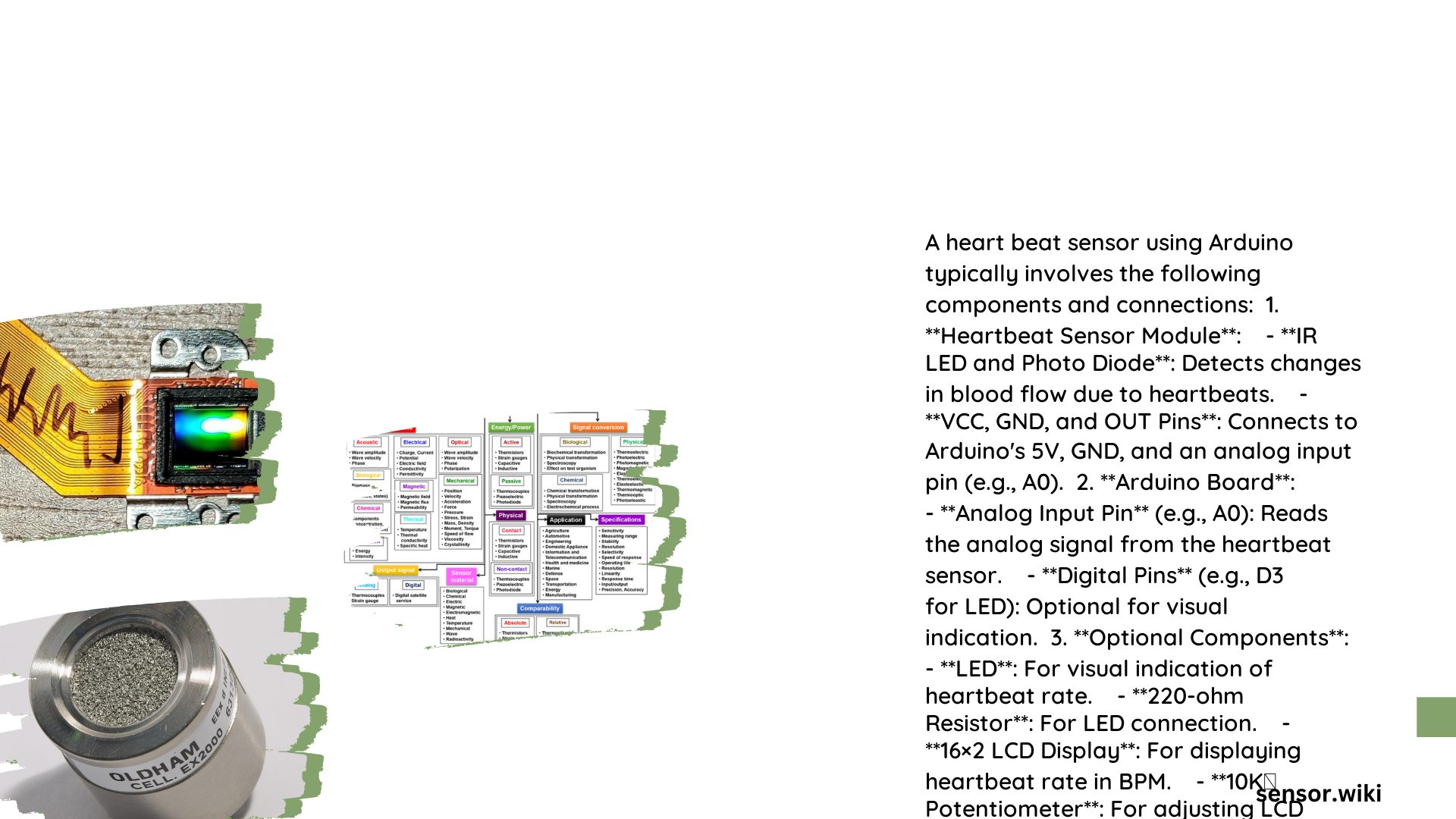A heart beat sensor using Arduino block diagram represents an innovative approach to monitoring human physiological signals through precise electronic measurement. This sophisticated system integrates multiple electronic components to capture, process, and display real-time heart rate data, enabling researchers, medical professionals, and hobbyists to understand cardiovascular dynamics with remarkable accuracy and accessibility.
What Are the Essential Components for Heart Beat Sensor?
Core Hardware Requirements
- Arduino Microcontroller
- Processes sensor signals
- Performs computational tasks
-
Manages data interpretation
-
Pulse Sensor Module
- Infrared LED
- Photodiode detector
- Signal conditioning circuit
Detailed Component Specifications
| Component | Technical Specification | Function |
|---|---|---|
| Arduino UNO | 5V, ATmega328P | Signal processing |
| Pulse Sensor | Analog output | Blood flow detection |
| LCD Display | 16×2 characters | Real-time visualization |
| Potentiometer | 10KΩ | Display contrast adjustment |
How Does the Heart Beat Sensor Detect Pulse?

Signal Acquisition Mechanism
The heart beat sensor operates through a sophisticated optical detection principle. When a finger is placed on the sensor, the infrared LED emits light that penetrates blood vessels. The photodiode measures light reflection variations caused by blood volume changes during cardiac cycles.
Signal Processing Steps
- Light emission through IR LED
- Partial light absorption by blood
- Reflected light captured by photodiode
- Analog signal generation
- Arduino analog-to-digital conversion
- Heart rate calculation
What Are the Precise Wiring Connections?
Arduino Pin Mapping
- Pulse Sensor
- VCC → Arduino 5V
- GND → Arduino GND
-
Signal → Analog Input A0
-
LCD Display
- RS → Digital Pin 12
- Enable → Digital Pin 11
- Data Pins → Pins 2-5
Recommended Wiring Practices
- Use shielded cables
- Minimize wire length
- Implement proper grounding
- Add pull-up resistors for stability
What Challenges Might Emerge During Implementation?
Common Troubleshooting Scenarios
- Signal Interference
- Use low-pass filters
- Implement noise reduction algorithms
-
Ensure stable power supply
-
Sensor Calibration
- Adjust threshold values
- Compare with medical-grade devices
- Perform multiple test iterations
What Programming Considerations Exist?
Arduino Code Strategy
const int pulsePin = A0;
int heartRate = 0;
void calculateHeartRate() {
// Signal processing algorithm
// Implement peak detection
// Convert to beats per minute
}
Optimization Techniques
- Use interrupt-based sampling
- Implement moving average filters
- Create robust error handling mechanisms
How to Enhance Sensor Accuracy?
Advanced Calibration Methods
- Cross-reference with professional equipment
- Develop statistical correction algorithms
- Implement machine learning techniques for signal interpretation
Performance Metrics
- Sampling rate: 200-500 Hz
- Accuracy: ±3-5 beats per minute
- Response time: < 100 milliseconds
Conclusion
A heart beat sensor using Arduino block diagram offers an accessible, flexible solution for physiological monitoring, bridging electronics, programming, and biomedical research.
Recommended Skill Development
- Electronics fundamentals
- Arduino programming
- Signal processing concepts
- Basic medical instrumentation knowledge
